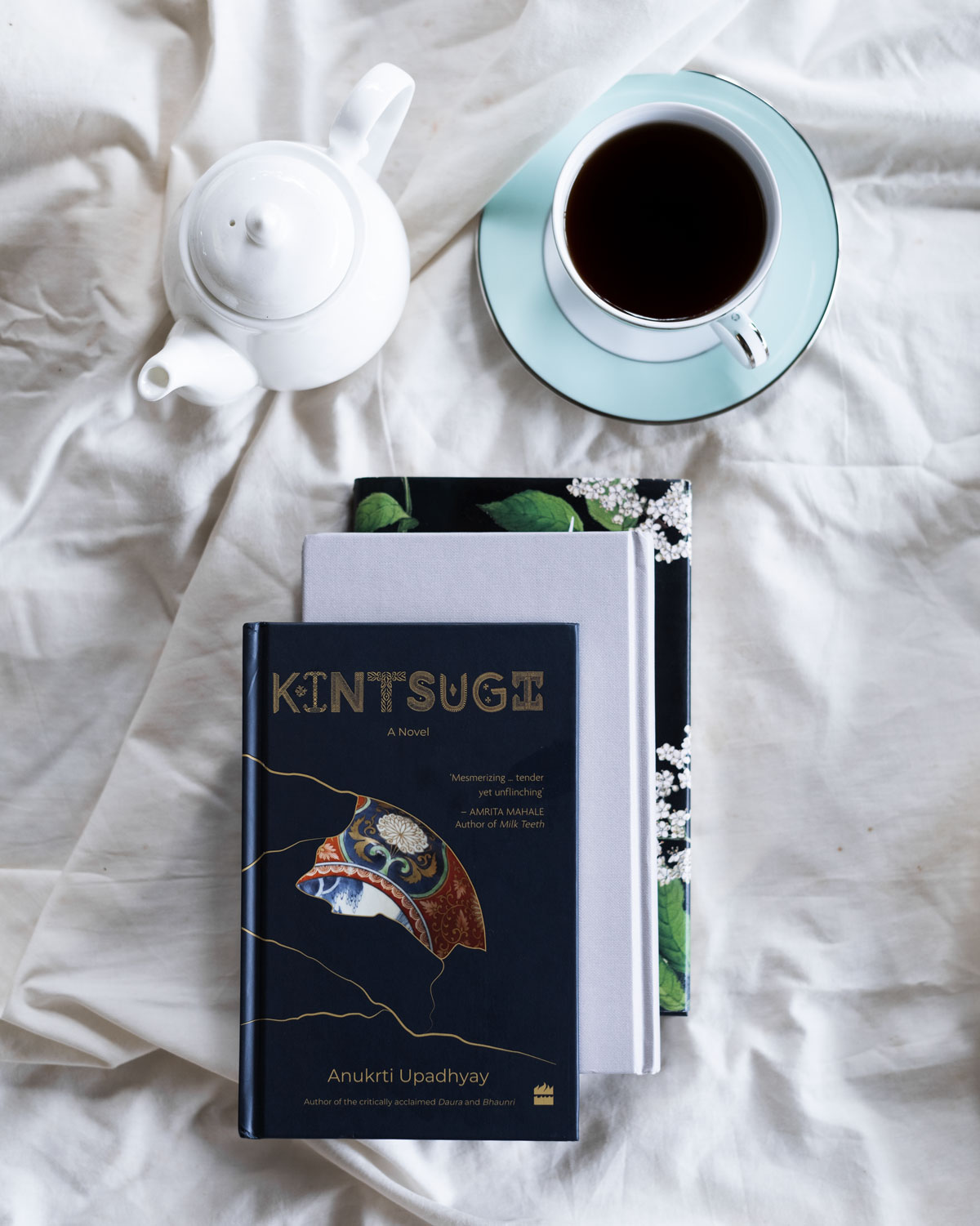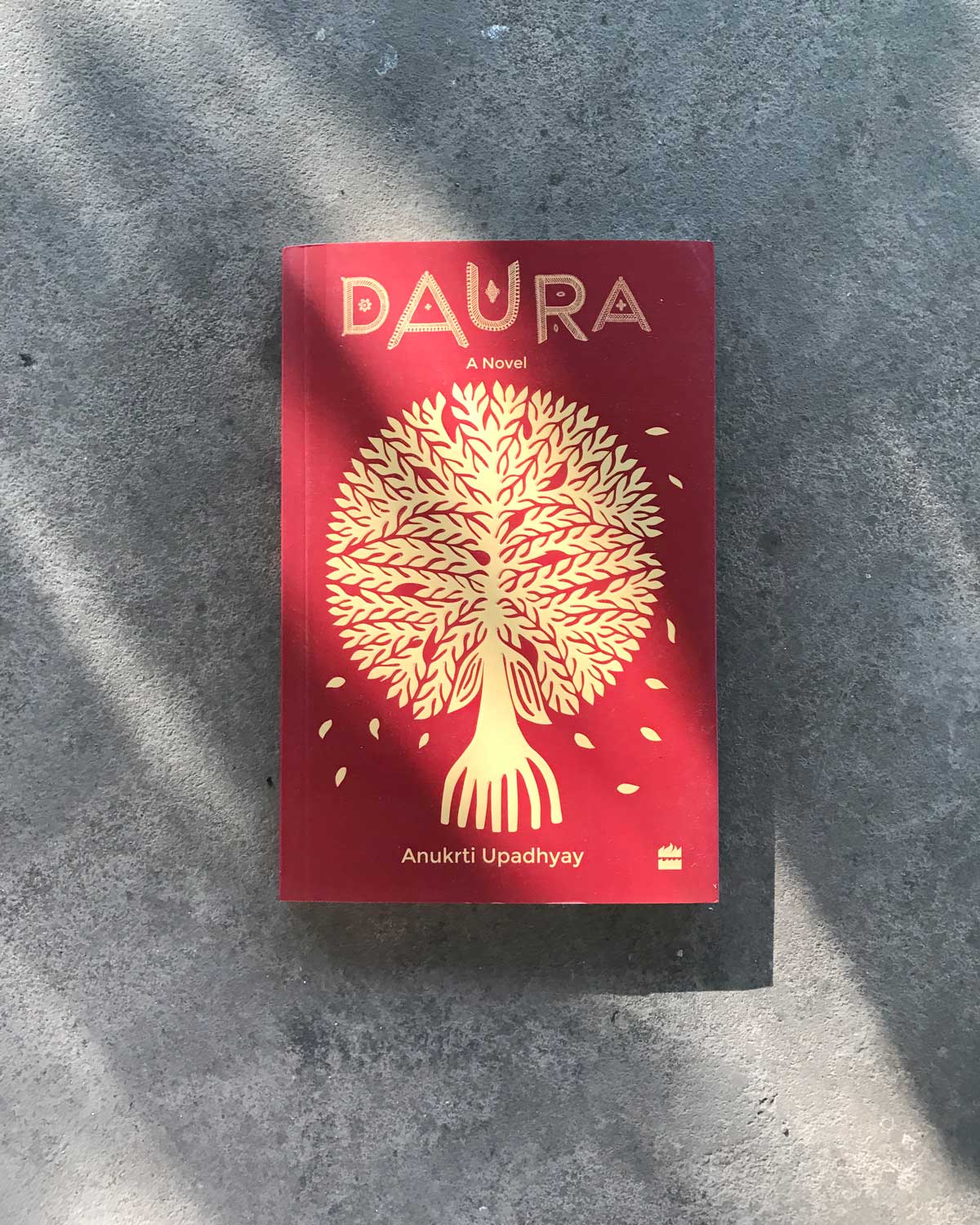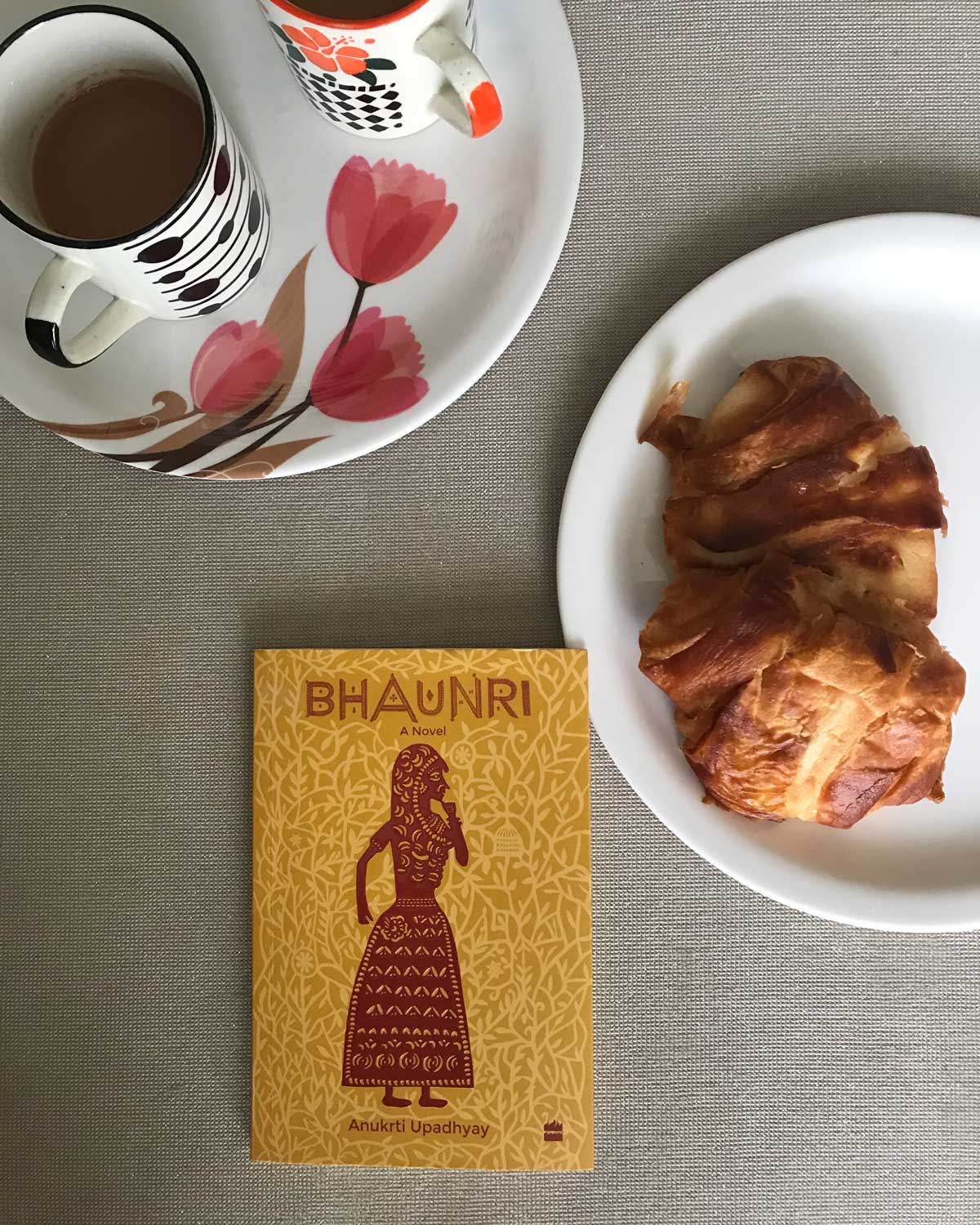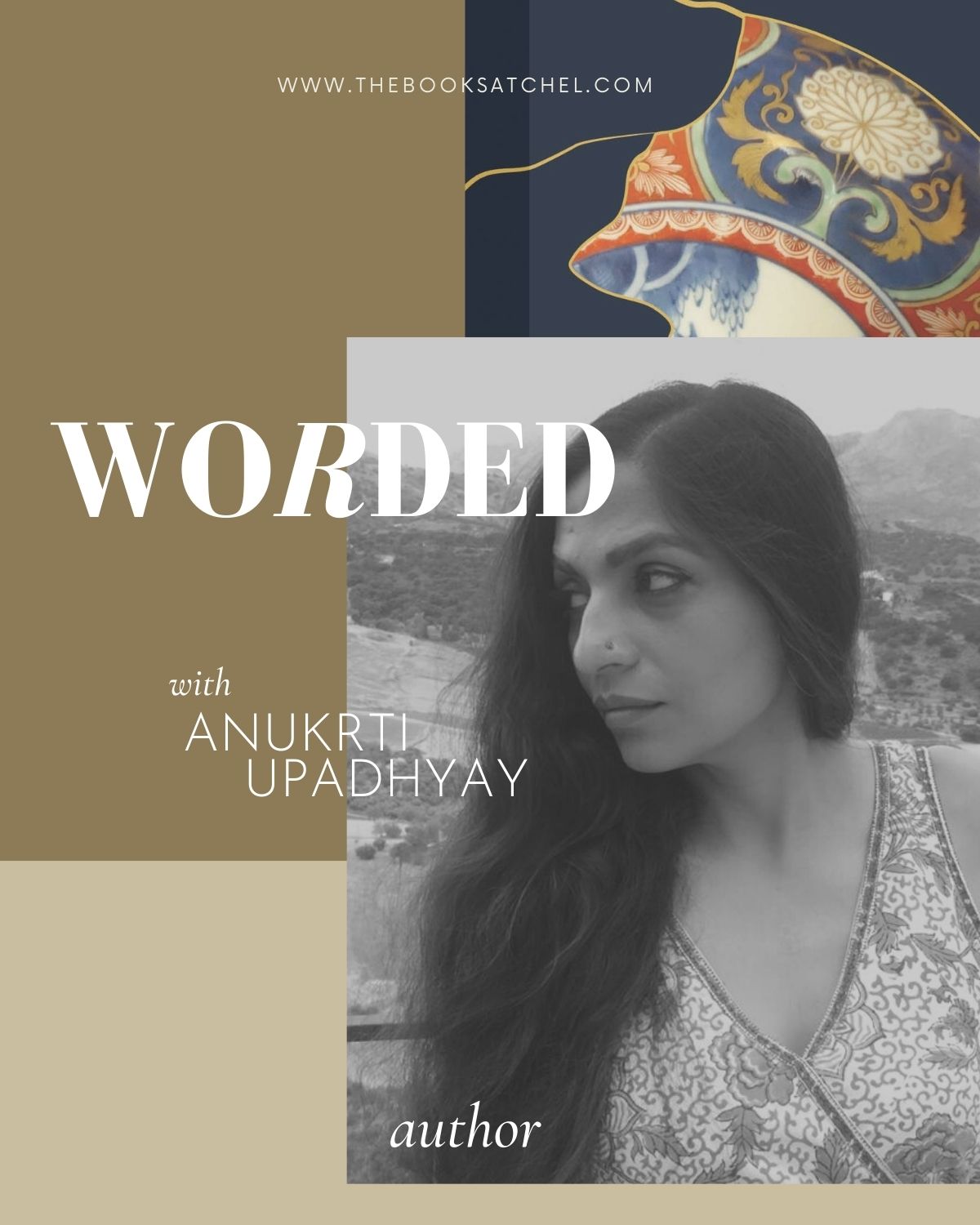Reader. Dreamer. Writer.
When I think of the word ‘rustic’ I am reminded of Anukrti Upadhyay’s novels. In fact, I was curious enough to ask her what comes to mind when she hears the word (Read to find out). Upadhyay who has tried her hand at many forms and different languages (she has a short story collection in Hindi named Japani Sarai), first published the twin novels — Daura and Bhaunri — for the Anglophone world. Both the novels are set in Rajasthan and are deeply reminiscent of the way of living, rural lifestyle, fierce women and dusty lanes. Daura, about a district collector posted in a remote Rajasthan village reads almost like a folktale as we make acquaintace with musicians, tehsildars and more characters. In Bhaunri, we meet a girl (Bhaunri) married off in childhood, as per the custom, to the handsome Bheema. It is a story of love, and standing up for yourself in your family circles. Reading it makes us ponder about marriage, duty and women’s place in patriarchial families. Her latest, Kintsugi, is altogether different, though she retains the style of measured sentences. Here we meet jewellery makers who train rigorously, travel to Japan and leave our sympathies with characters whose lives and destinties are tangled up. I find more about her writing routine, favourite books and how each book bestowed a different experience in this interview.
Interview with Anukrti Upadyay
In the latest edition of WORDED, we have Anukrti Upadhyay talking about re-reading her favourite novels in isolation, doing extensive research and finding home in many cities. Slightly edited excerpts from the interview follow:
You dabble in many forms—short stories, poetry, novellas and a novel. Is your creative process different in each case?
For me, the creative process for both poetry and prose begins with an image or a phrase. Poetry usually forms almost by itself, a tumble of images and what those images invoke. I write poetry mostly in Hindi which is my first language and the rhythm and flow of the language soothes the very emotion which had birthed the poem. Prose on the other hand unravels itself more slowly. Stories, short novels, novel – all continue to happen in my head as I go about my day. Knots come undone and new strands reveal themselves during the process of writing itself. I write intuitively, feeling my way as I go, and am often surprised by what happens in a story or novel.
How did you decide to write Kintsugi? Did the characters speak to you first or the cities where the novel is set?
The Japan part of Kintsugi was written first and it was Hakone and Tokyo and Kyoto, with their distinctive and mesmerizing beauties that compelled the writing. Then the story moved itself to Jaipur organically but in this part of Kintsugi, it was the story which selected the place. When I wrote the last part, set in Borneo, I felt it was the right setting – the lush, richly-coloured island as the backdrop to the dark anguish of one character and the drab disciplined existence of the other.
What aspect of your writing process is most enjoyable to you? Could you give us a peek into how you plot and complete a novel?
The first draft , where I am writing to discover what happens next and ravelling in words, in suddenly-emerging sub-plots and the surprises that the characters throw at me, is definitely the most enjoyable part, though there is a baffling resistance to writing too at this stage, a strange wish to keep the story to myself, like children suck on a hard-boiled sweet. The second and subsequent drafts and re-writes are the difficult part. I am an incorrigible tinkerer with text and continue editing even after I send the manuscript; till the very end of the editing process, till my editor wisely tells me to just stop!
Kintsugi blends together cultural differences, cities, and POVs of several characters. All characters are ultimately made of bits and pieces of memories of the other characters embossed in them. What was your thinking behind doing this ‘kintsugi’ with different characters?
I was perhaps trying to show how people impinge upon each other in ways they cannot understand and their actions impact others whom they might not know at all. The fact that we are connected, our destinies are linked, our acts send ripples to unknown shores was very much on my mind while writing Kintsugi.

You have told the story of Daura through multiple narrators too.
I conceived Daura a bit like a jigsaw puzzle, with each character holding a piece. In that sense, Daura’s use of multiple narrators is completely different from Kintsugi. In the former, a happening is being pieced together through multiple narrations, in the latter the characters are trying to piece themselves together.
How did Daura and Bhaunri come into being as twin novels instead of being published one after the other?
The decision to publish the two of them together was made by my publisher, Udayan Mitra, and my editor, Rahul Soni. Daura and Bhaunri share their locale and perhaps also the theme of an overwhelming love, though in Bhaunri it is the central theme with a woman at the heart of the story and in Daura it shares center-stage with others like social justice and environment.
Was it difficult penning down non-Indian characters in Kintsugi? How did you ensure their stories would be fully fleshed?
The non-Indian characters came about naturally as part of the story. The chapter titled Meena was written first. I was writing under the influence of the spirit of Hakone and Yuri, in many ways personified it. Once the core of the story was activated, it threw out characters as it proceeded. I can’t say whether their stories are fully-fleshed, I tried to write what seemed inevitable to me. I have worked in international organisations among people of all nationalities and from a more practical perspective, I felt comfortable handling non-Indian characters.
.@anukrti_U on the importance of reasearch—I confirmed details of bureaucracy & hierachy (in my novels). For Kintsugi I wandered Johri bazar lanes and interacted with artisans Click To Tweet
How was the research different while writing Bhaunri, Daura and Kintsugi?
For Bhaunri and Daura I did not do any research beyond delving into my memories of the land and people and talking to my mother when I doubted a remembered detail! I did run Daura past serving and retired IAS and IPS officers to confirm the details of bureaucracy and hierarchy. For Kintsugi, I wandered in the lanes of Johri bazar and spent time with artisans and in their gaddis. I took notes and was fortunate to have my husband accompany me in these wanderings so I could double-check my notes.
Do you have a favourite jewellery style? Kintsugi mentions many.
Meenakari, the colourful and fragile enamel work is my all-time favourite.
You write in two languages, Hindi and English. In which language do you think while crafting the story?
I think in English when writing prose. It has become the language of prose for me but there are words and expressions which emerge in Hindi or even in Rajasthani and I go hunting for the right equivalent in English. It is all very exciting and frustrating!
Are you interested in translations too?
Not at this stage but perhaps some time in future I definitely plan to translate Daura and Kintsugi in Hindi.
Your women characters are often bound in patriarchal institutions, but they emerge in a quietly explosive way. Are you perhaps trying to say that humans and systems are flawed but there are ways to redeem yourself even trying circumstances?
The women in my stories are products of the flawed system but do not allow themselves to be limited by it. To that extent, they are stronger than the system, resilient and stealthily powerful and yes, fully capable of claiming their identities.
The women in my stories are products of the flawed system but do not allow themselves to be limited by it. They claim their identities—@anukrti_U on Worded Click To Tweet
You’ve written, “Not all vessels are meant to hold water, some are for allowing water to seep away.” If we extend this to books, what do you think is the purpose of literature?
That is difficult to answer. For me, the purpose of literature is to resolve through expression and to create beauty in the process.

Books Books Books
What books have kept you occupied you in this time of isolation?
I read compulsively. I have re-visited old favourites like The Rainbow and Women in Love by D.H. Lawrence, Nikolai Gogol’s Dead Souls, Parati Parikatha by Phaneeshwarnath Renu and read ad re-read Tanizaki Junichiro’s Makioka Sisters, short stories of Kawabata Yasunari and Murakami Haruki. I read books by Indian women authors like Devpriya Roy, Janice Pariat, Janhavi Barua, Sharnaya Mannivannan and found it a very rewarding expeirnce. I also read works by Hiromi Kawakami, Mieko Kawakami, Yukiko Motoya, Sayaka Murata.
When do you read?
Any time I can but definitely at night before going to bed.
A literary association game for some fun. What book comes to mind when hearing these words?
Bowl – The Golden Bowl by Henry James (This one is obvious!)
City – Underground by Murakami Haruki (About the 1995 Serin gas attack in Tokyo)
Gold – Abhigyan Shakuntalam by Kalidas (perhaps because of the all-important gold ring!)
Rustic – Maila Aanchal by Phaneehswarnath Renu (About village-life in Bihar)
Any novels set in Japan, whether or not they inspired you in Kintsugi, that you hold close to your heart?
Several. I read and re-read The Makioka Sisters by Tanizaki Junichiro and Snow County by Yasunari Kawabata. Besides novels, the short stories by Kenzaburō Ōe and Murakami Haruki have affected me deeply.
Are you an early bird or a night owl?
A complete night owl!
Do you have a hobby unrelated to the literaryscape?
I like going for walks and practicing yoga.
What is one tip you wish you had known as a new writer?
With my first books out only last year, I consider myself a new writer. I have no tips to offer beyond the obvious one – write even if it breaks your heart and is as difficult as hewing rocks.
Finding home
You have mentioned that Japan is a favourite place of yours. What is your relationship with Japan?
My husband works for a Japanese investment bank and he introduced me to Japan. I have visited Japan many times and have loved it in every season. I feel deeply fascinated by Japan’s beauty and contradictions.
Let me come back with a related question. Does your childhood inspire how Rajasthan is often a core in your English works?
Yes, I think so. I didn’t know till I began writing Daura, how deep the memories of, and hankering for, the Rajasthan I part-saw-part-imagined while growing up in Jaipur, were.

What is your idea of home?
With my life divided in as many places as my loved ones live in, I find myself with multiple homes. But primarily, now I think of Bombay as home and my little writing room overlooking trees and resounding with bird-song and crow-calls.
What stories from India do you hope to see more of?
All sorts of stories told by the myriad people who make up this idea of our nation, stories written by those who have been historically marginalized – Dalits and women, tribals and desert-dwellers stories from areas which have less presence in English literature – North east, Chattisgarh, Rajasthan. I want to read stories of hope and revival.
On loving first drafts, tinkering forever until the editor wisely advises to stop, thinking in many languages—@anukrti_U on Worded Click To Tweet
Pin this interview with Anukrti Upadhyay for later!











hello ANUKRTI UPADHYAY your article are so useful and thoughtful its full of ideas and all language combination are here and so sweet of them.